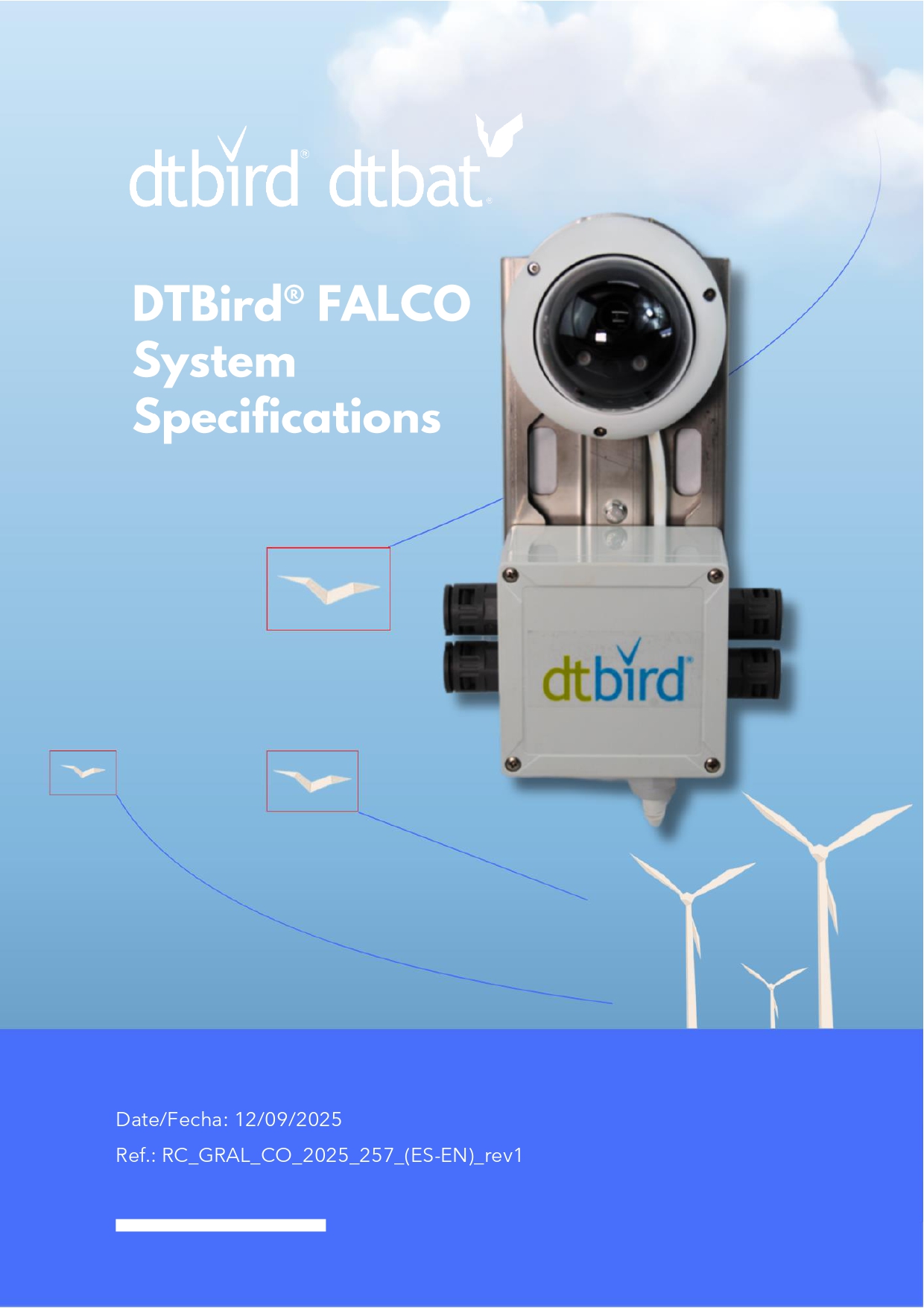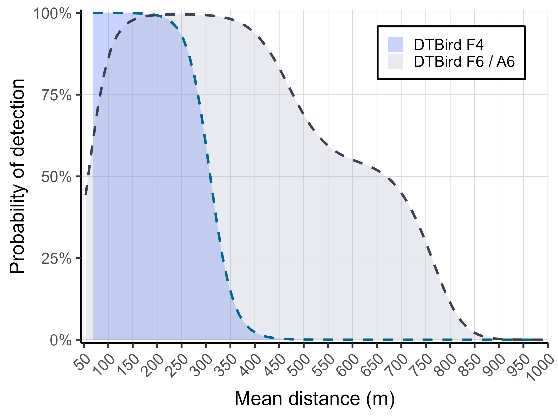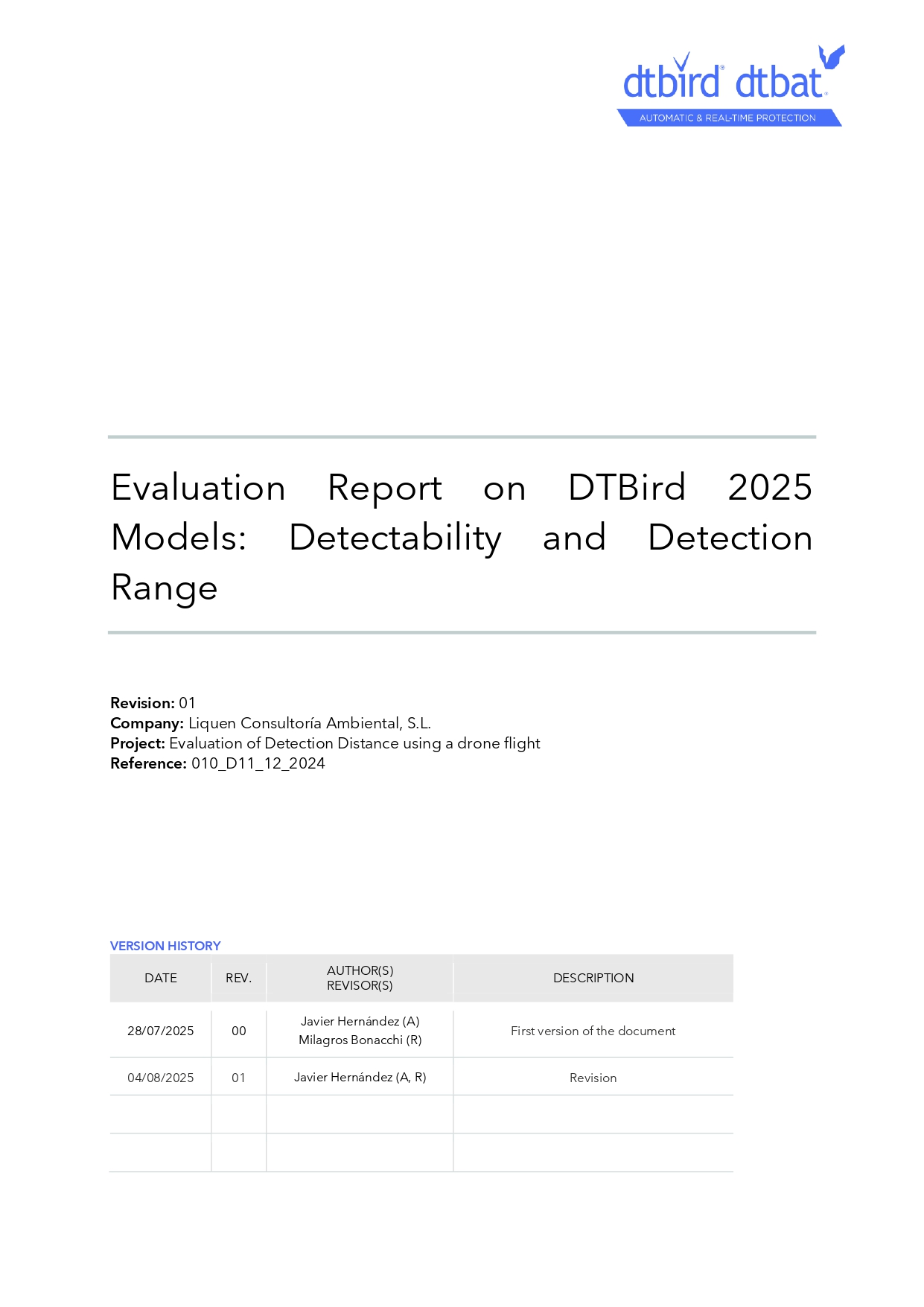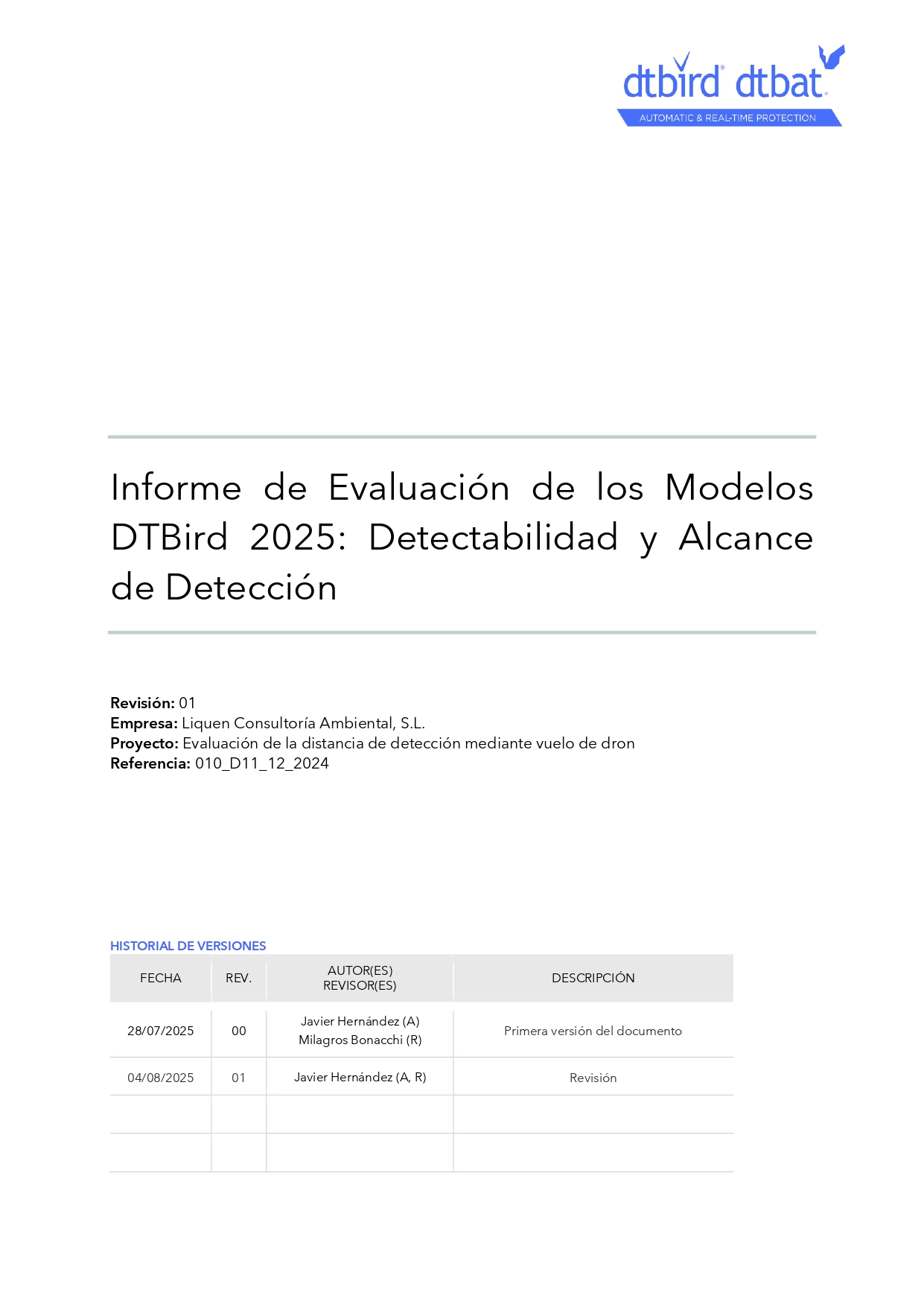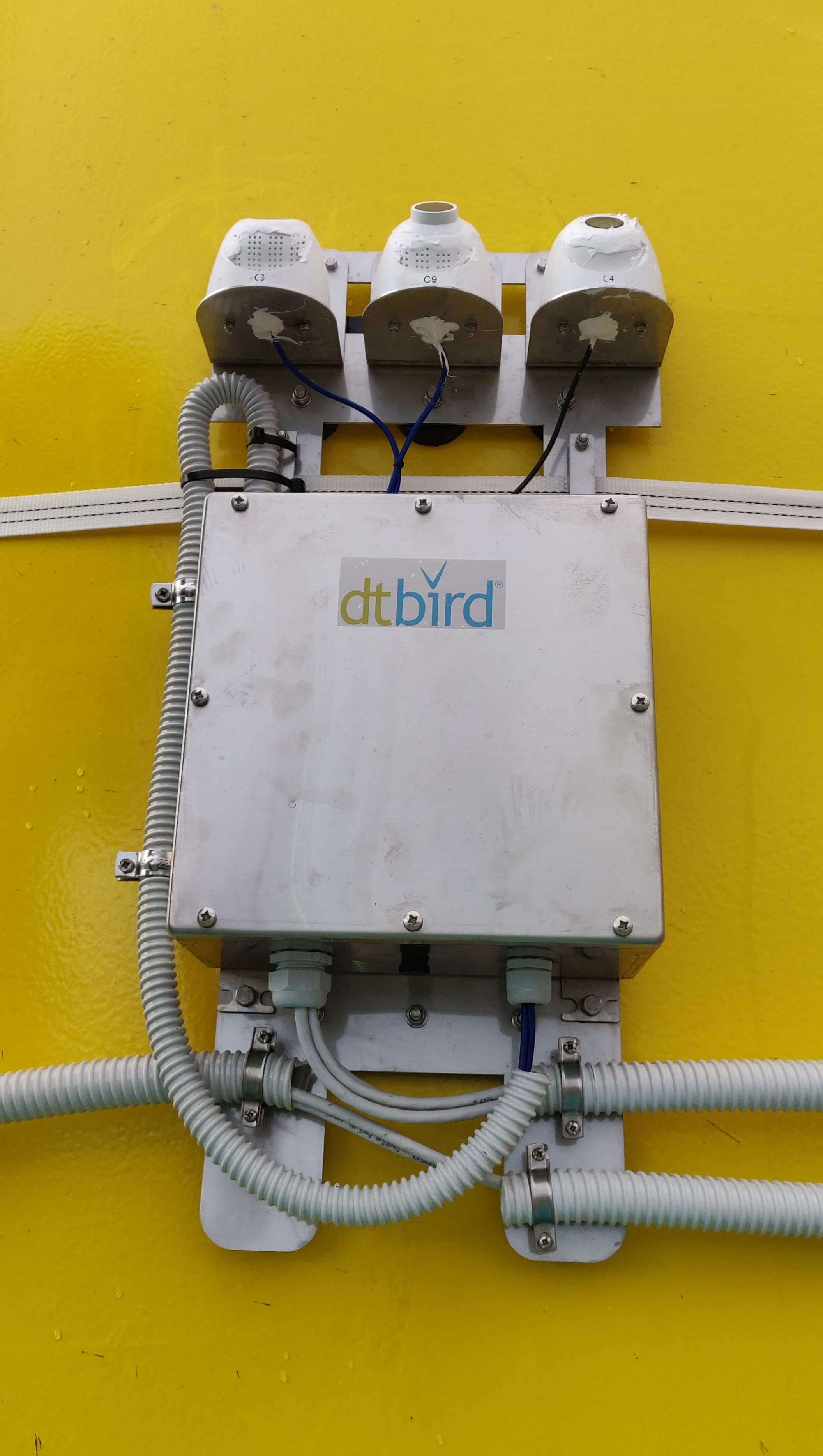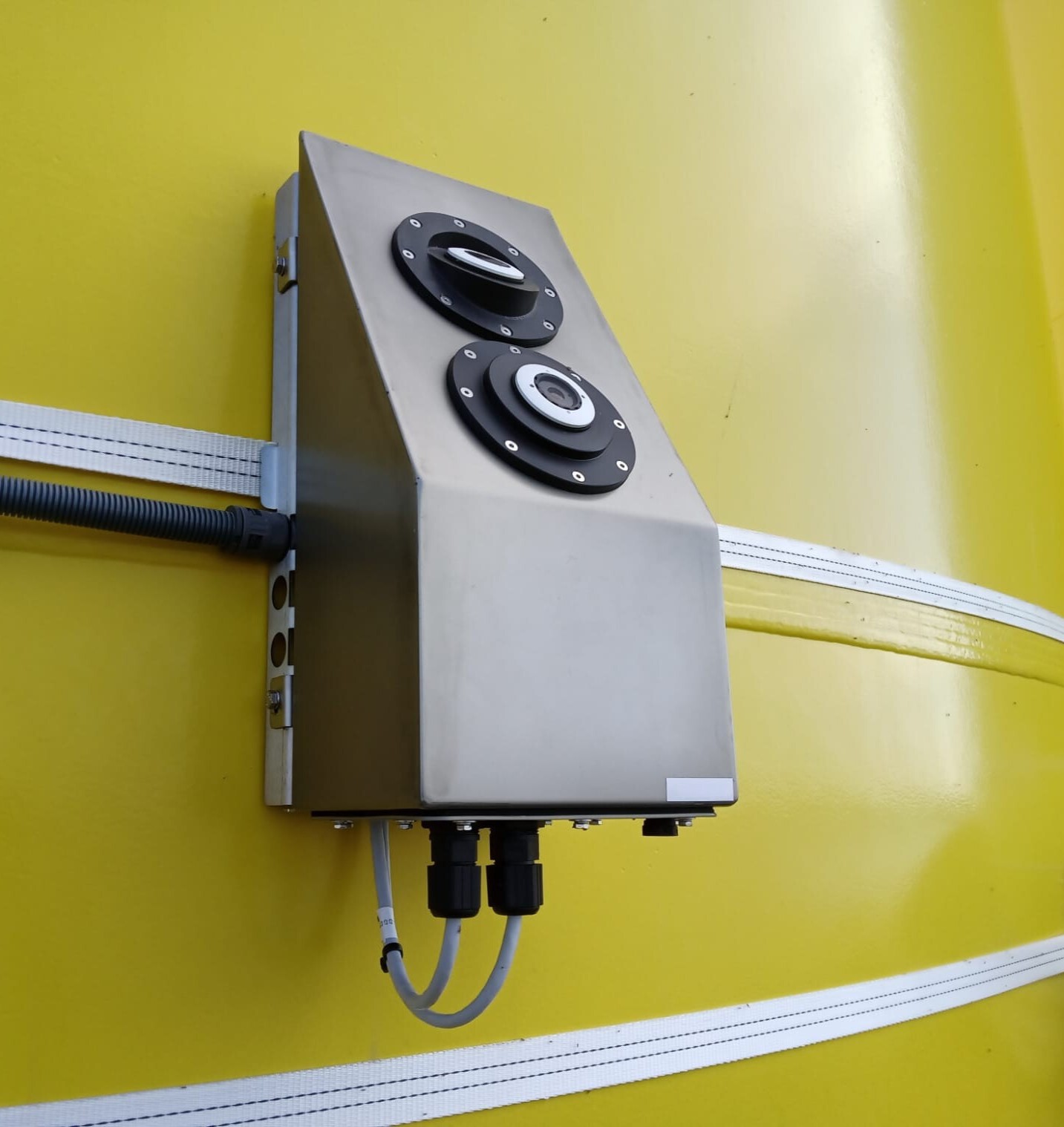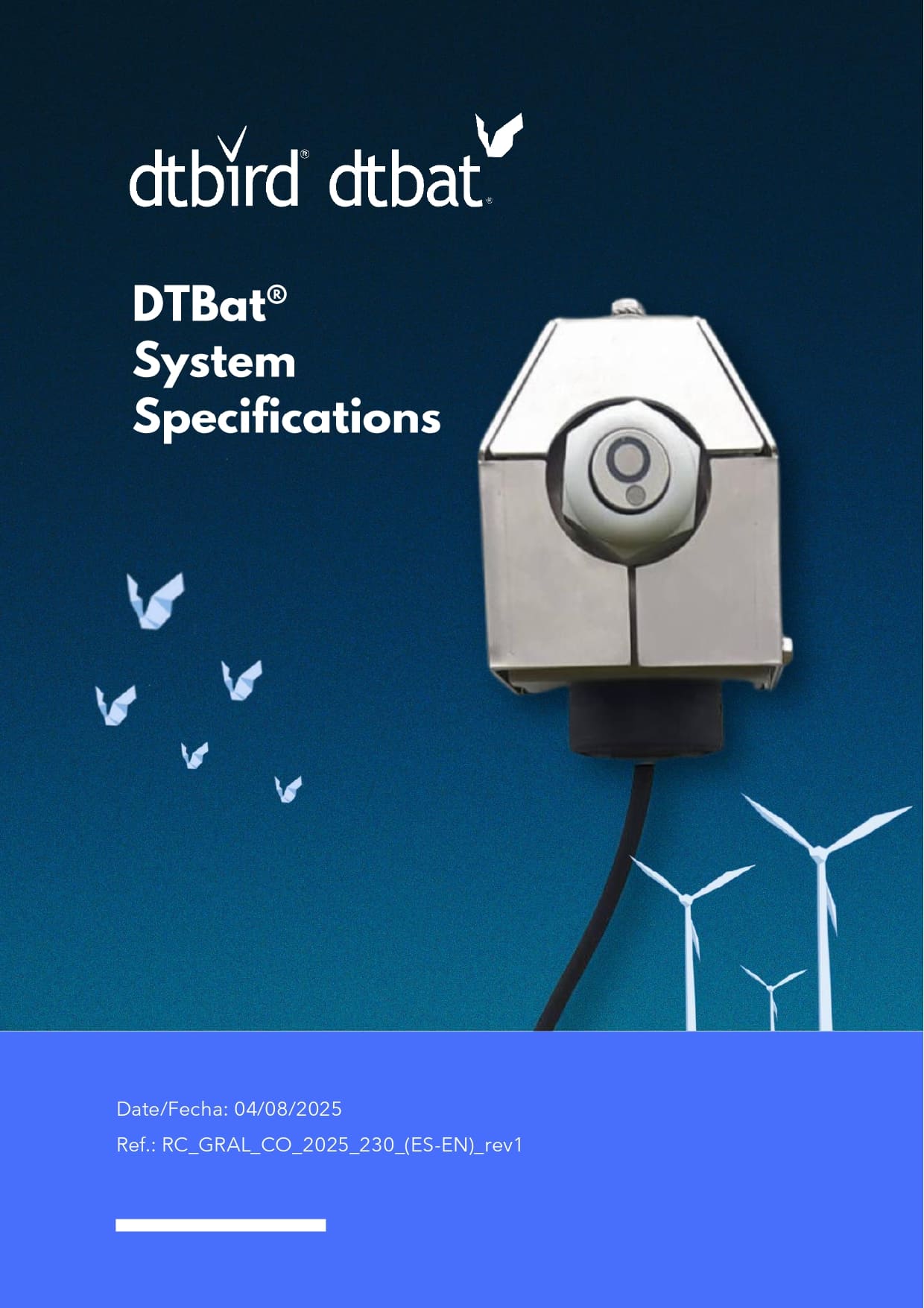DTBird® announces the publication of the technical specifications for the FALCO system. Already in commercial use for over a year, the system has been deployed across various onshore wind energy projects across Europe and beyond. This formal documentation marks a milestone in DTBird’s commitment to technical transparency and support for wind farm developers, operators, and environmental authorities.
With improved flexibility and performance, the DTBird® FALCO system now includes five model configurations — F4, F6, F8, F4+F,6 and F4+F8 — to adapt to different rotor diameters, species profiles, and project requirements.
Main Features:
• Detection module: Maximum distance up to 1 km with graphics of detectability at any distance and detection distance ranges with detectability >90% for species like golden eagles and red kites.
• 360º horizontal coverage and up to 90º vertical coverage with real-time detection of all bird species and sizes, including the rotor swept zone.
• Collision detectability in videos >95%.
• Deterrence module with automated sound emission (250–12,500 Hz). Efficiency proved by independent evaluations (REWI 2024, ECOCOM 2016).
• Stop module that automatically shuts down the wind turbine based on real-time bird collision risk evaluation with 4 stop protocols, from basic to high protection.
• Data integration with wind farm SCADA/PLC systems via multiple protocols.
• All events, videos, and operational data are stored and accessible via DTBird®’s NEST platform, with protected access and integrated analytics.
Check the document below!
Let's talk about your Wind Farm development project requirements:Questo indirizzo email è protetto dagli spambots. È necessario abilitare JavaScript per vederlo.
New DTBird® FALCO Technical Specifications.


